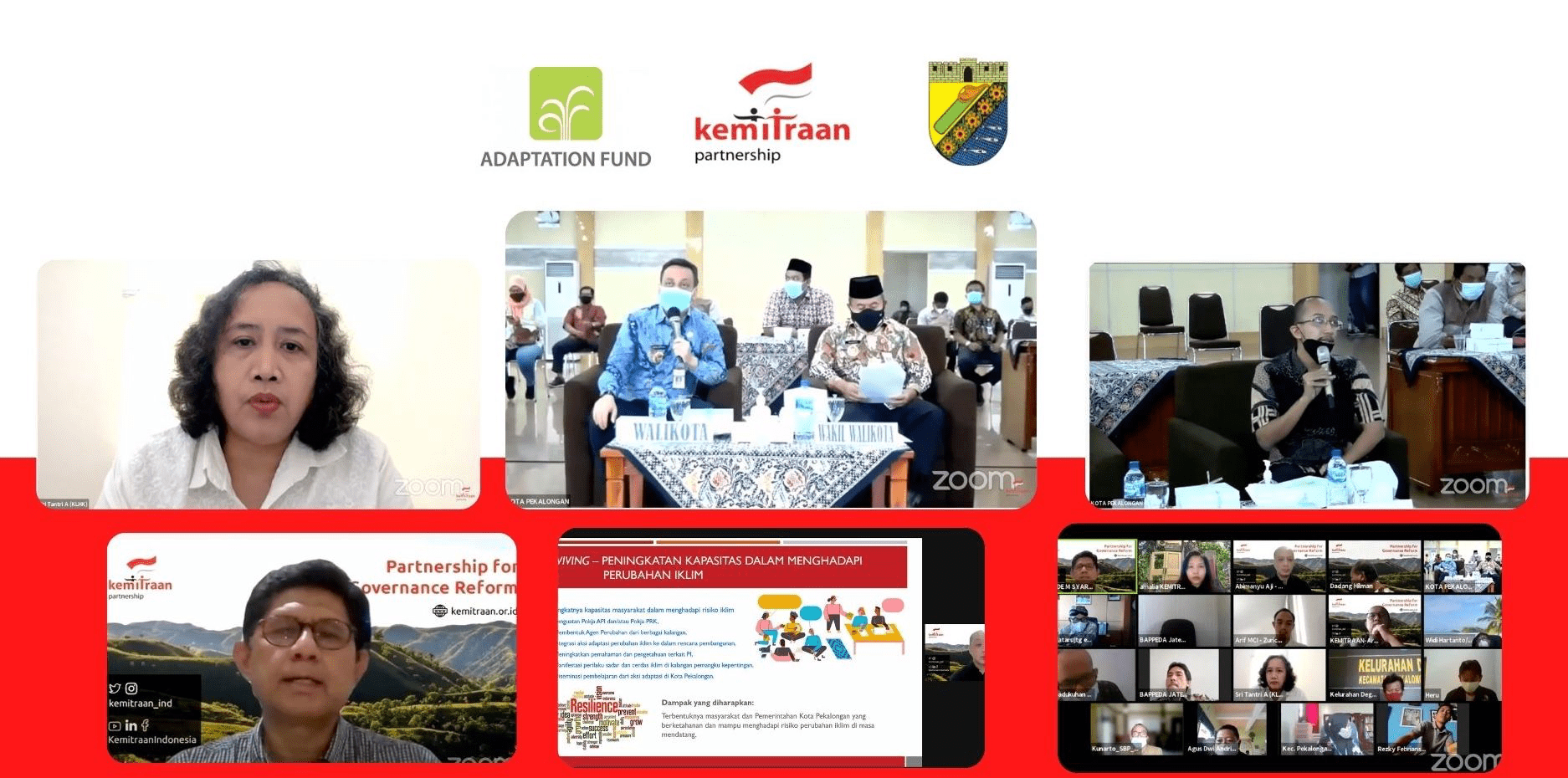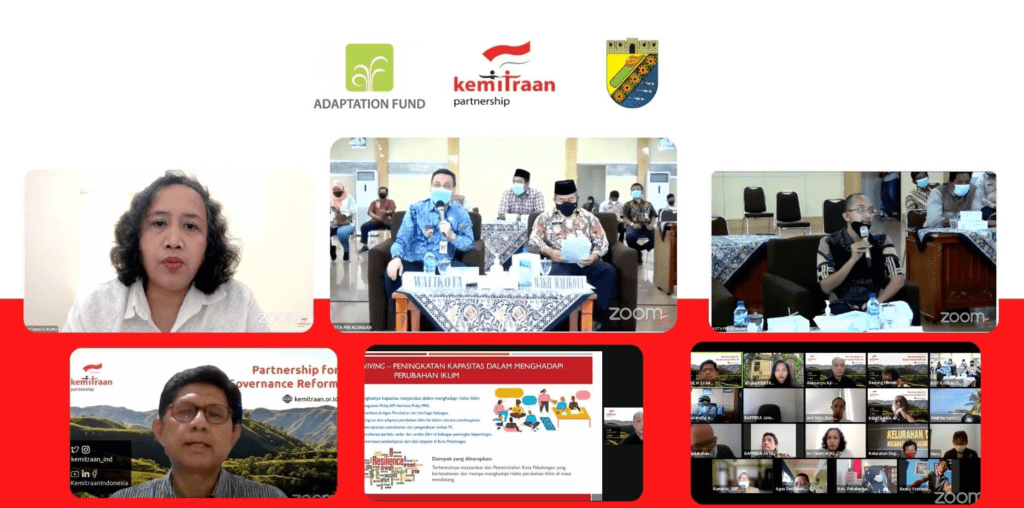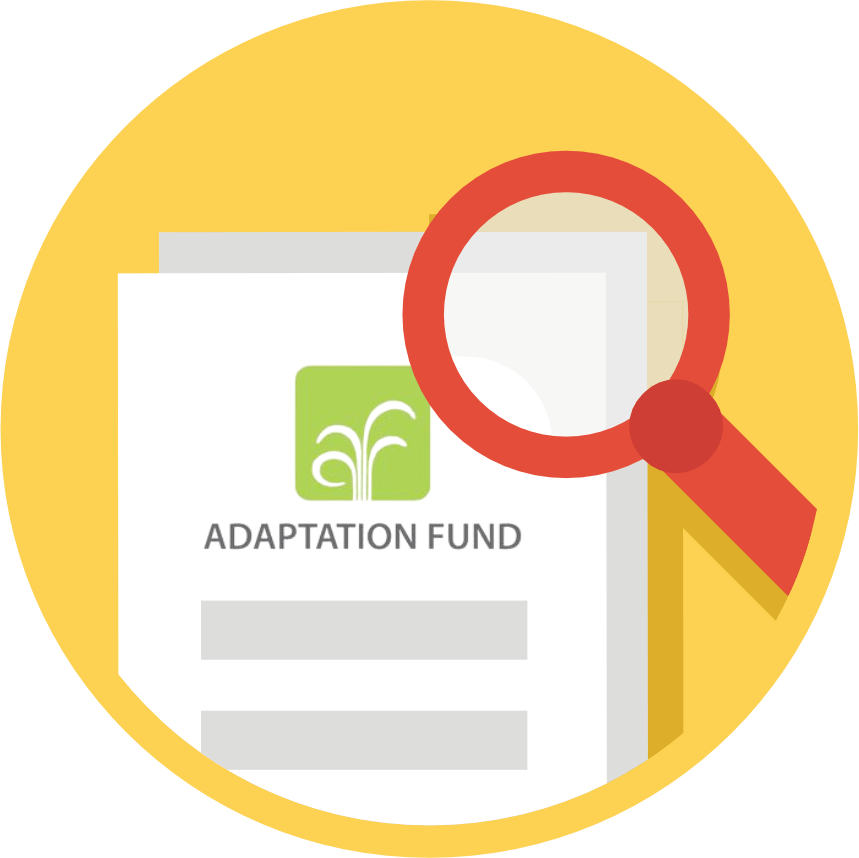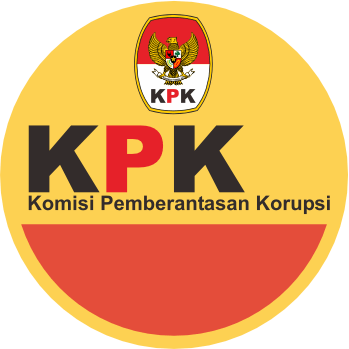

Pekalongan, 15 July 2021 – The north coast of Java is one area that has been repeatedly affected by the impacts of climate change. The sea level in this region is rising between 6-10 mm/year. Although the projected sea level rise (SLR) in this region is not the highest in Indonesia, the high population density and rapid urban development have placed the North Coast of Java as an area that is highly vulnerable to disasters and the impacts of climate change. As the main and busiest corridor for human movement and logistics in Java, this region is faced with various topographical problems, namely flood flooding (floods that occur during the rainy season), tidal flooding (rising sea levels), and subsidence of soil structure.
Pekalongan City is one of the cities located on the coast and experiences tidal flooding almost every year. This has happened in the last five years, namely 2012, 2014, 2015, 2016 and 2017. Data from the Bappeda (Regional Development Planning Agency) of Pekalongan City shows that the condition of the soil layer on the coast of Pekalongan has reached minus 30-50 cm below sea level. . As a result, the possibility of flooding will often occur. The effect of land subsidence is also the highest factor compared to sea level rise on changes in the area of tidal flood inundation.
The impact of coastal flooding not only affects coastal related sectors such as fisheries and tourism, but can also create a domino effect on other development sectors. Various efforts have been made by the Pekalongan City Government to overcome these problems; either independently or with the help of a third party.
Independently, the Pekalongan City Government has developed an annual evacuation plan for the purpose of mobilizing communities during floods. They have also implemented short-term efforts by providing economic assistance in the form of fish seeds and fishing nets, as well as physical assistance such as raising embankments in the embankment area. Local communities have also implemented voluntary adaptive measures, albeit modest ones due to economic constraints. For example, raising the floor level, changing livelihoods, cleaning rivers and others. However, these steps were carried out partially, without a comprehensive plan that could link the root causes of the problem to the activities carried out. So the results are a bit ineffective, especially when considering a long-term perspective.
KEMITRAAN seeks to participate in overcoming this problem through collaboration with the Pekalongan City Government to build the capacity of stakeholders and advocate for climate resilience policies. Through the Adaptation Fund (AF) funding scheme, KEMITRAAN implements a program entitled 3S Approach (safekeeping – surviving – sustaining) to Build Coastal City Resilience to the Impact of Climate Change and Natural Disasters in Pekalongan City.
The 3S approach is an approach for protecting (safekeeping), increasing resilience (surviving), and (sustaining) maintaining the socio-economic conditions of the people of Pekalongan City who are directly affected by climate change so that they remain conducive and sustainable. This program will run for the next three years. The program launching event which was conducted online on July 15, 2021, also involved stakeholders in Pekalongan City, Central Java Province and the Ministry of Environment and Forestry, as well as researchers who are academics from several universities, including UNDIP (Diponegoro University), ITB (Bandung Institute of Technology) and IPB (Bogor Agricultural University).
“This program will begin by mapping the current field conditions and identifying root causes that can be intervened with the Adaptation Fund project managed by KEMITRAAN in order to complement the programs carried out by the Regional and Central Governments. We really appreciate the Pekalongan City Government, Central Java Provincial Government, and KLHK (Ministry of Environment and Forestry) who have directed and facilitated the implementation of this project and hope to increase the climate resilience of Pekalongan City to avoid the danger of annual tidal floods and subsidence. very worrying ground. Therefore, this Adaptation Fund project will specialize in interventions that use ‘natural solutions,’ such as planting mangroves and other environmental solutions that are expected to reduce tidal waves and annual flooding,” said Laode M. Syarif, Executive Director of KEMITRAAN at the launch of the activity.
The Adaptation Fund (AF) is one of the sources of non-APBN climate funding that can help overcome the problems of climate change impacts in Pekalongan City. According to the Chairman of the DPRD of Pekalongan City, Mohamad Azmi Basyir, this program must be maximized in terms of planning and implementation. layers of society to create sustainable climate resilience solutions in Pekalongan,” he explained.
The Directorate of Climate Change Control, Ministry of Environment and Forestry, Sri Tantri Arundhati, added that, from a regulatory perspective, Indonesia has included adaptation in the Environmental Protection and Management Law and the 2020-2024 National Medium-Term Development Plan (RPJMN). The NDC (Nationally Determined Contribution) Adaptation Roadmap is being developed to provide direction towards the achievement of NDC adaptation by 2030. Guidelines and tools have also been prepared for the implementation of climate change adaptation at the site level. From today’s discussion, I hope this can be a trigger for how adaptation planning can be better so that the negative impacts of climate change can be reduced so that the livelihoods of communities around the coast are prosperous again,” said Sri Tantri Arundhati, who serves as Director of Climate Change Adaptation.
On the same occasion, Afzan Arslan Djunaid, Mayor of Pekalongan conveyed the conditions experienced by the people of Pekalongan City for the last five years. According to him, Pekalongan is a small city with complex problems, such as tidal flooding, garbage, waste, and river silting, which until now have not been resolved.
“We have been feeling the effects of climate change for five years. Tidal floods often hit, plus the current flood is due to high rainfall and land subsidence in Pekalongan is getting worse. We certainly can’t solve it alone. Thank goodness there was help from PARTNERSHIP through the AF project. Hopefully this can ease the burden on the people of Pekalongan, whose houses are often flooded,” he explained.
At the end, Afzan hopes that one by one the problems in Pekalongan can be unraveled. Of course, by involving the commitment of various parties. This can be started by changing people’s lifestyles by starting to sort out household waste. “Let’s get up and start building a better Pekalongan!” he said.
It is hoped that in the future, the 3S approach can make a real contribution to Pekalongan City’s efforts to be able to adapt to climate change, and more importantly increase community resilience in coastal areas.





